Inclusivity in education is the focus on creating teaching models that support all learners, including non-disabled children, disabled children, and children with other special educational needs. Through inclusive education, children of the same age learn together in one inclusive learning environment – instead of being segregated into different classrooms or schools – as they collectively develop the knowledge and skills they need to thrive.
Inclusive education ensures that all children:
- receive a quality education.
- are treated fairly.
- receive equal opportunities and equal access.
- are celebrated for their diversity and unique contributions to the classroom environment.
- can learn without discrimination and prejudice from teachers, and without bullying from their peers.
- have accessible schools and teaching materials
In particular, inclusive education ensures inclusivity for learners who have historically been excluded from mainstream education settings. This includes children with a physical disability or a learning disability, as well as disabled children who have faced additional barriers to learning due to their gender, health, ethnicity, sexual orientation, exposure to conflict or poverty, or cultural or economic background.
Why is inclusive education important?
According to Unicef, disabilities are one of the most serious barriers to education around the world.
Inclusive education, meanwhile, aims to break down this barrier by recognising and promoting all children’s right to education, and prioritising their wellbeing, autonomy, and dignity.
This right is protected at both the national and the international level. In the United Kingdom, for example, legislation such as the Equality Act (2010), the Children and Families Act (2014), and the Special Educational Needs and Disability Act (2001) outline the inclusivity responsibilities of schools and other public bodies.
At the international level, there are several key policies and frameworks, including:
- The UN Convention on the Rights of the Child (UNCRC). Article 28 of the UNCRC is focused on all children’s right to education.
- The UN Convention on the Rights of Persons with Disabilities (CRPD). Article 24 of the CRPD is focused specifically on all disabled people’s right to education.
- The UN’s 2030 Agenda for Sustainable Development (Agenda 2030). Goal 4 of Agenda 2030 is focused on ensuring inclusive and equitable quality education for all.
What will happen if inclusivity is not implemented?
According to an inclusive education report written by the UK’s Department for International Development and the International Disability Alliance for the 2018 Global Disability Summit, excluding disabled children and young people from inclusive schools and classrooms “can leave them in a cycle of poverty and inequality that extends throughout adulthood. Without the foundational skills they need for work, many young people with disabilities find themselves unemployed or stuck in low-wage, unstable, informal-sector jobs that offer them few opportunities to strengthen their skills and improve their income.”
The report also notes that excluding disabled children from school leads to social isolation from friends, families, communities, and the wider society.
What are the benefits of inclusive education?
Inclusive education benefits all children. According to the European Agency for Special Needs and Inclusive Education (EASNIE), inclusive education enhances academic, social, and economic opportunities and outcomes for children with and without disabilities.
In its 2018 report, titled Evidence of the Link Between Inclusive Education and Social Inclusion, EASNIE found that inclusive education increases the likelihood for:
- the formation of close friendships between learners with and without disabilities.
- disabled people’s employment and financial independence.
- enrolment in higher education.
It’s also clear that inclusive education can significantly improve the overall wellbeing of pupils and students. Benefits for disabled students include:
- Increased confidence and self-worth. Historical education settings that segregated or ‘othered’ disabled children in small groups had a lasting and harmful impact. For example, disabled children suffered from fewer learning opportunities and poor self-esteem, while their non-disabled peers indirectly – and erroneously – learned that segregation was acceptable. By teaching everyone together, however, inclusivity becomes inherent for all children, and disabled children are demonstrably valued and respected, and more likely to feel a sense of belonging within the school community.
- Increased quality of education. Teaching everyone together ensures that all children receive the same level and quality of education. In contrast, students who may have been traditionally excluded from the mainstream classroom – or only partially included in it – often experienced inconsistent teachings and did not always follow the same curriculum as their non-disabled peers.
How do you bring inclusivity into the classroom?
An inclusive classroom is one that has:
- students with mixed abilities.
- an inclusive curriculum.
- no separation between children based on abilities.
- learning activities that take each students’ needs into consideration.
- accessible adaptations, such as wheelchair ramps.
- adequate support for all students.
Training in inclusive teaching and inclusive practices is another key component in creating inclusive classrooms and teaching strategies. There are a number of different contexts and approaches to teaching within inclusive classrooms, so having a solid understanding of the different options can help create the best possible inclusive environment for learners, as well as help teachers address their own biases and adapt their teaching practice and pedagogy based on the needs of all students.
Specialised training can also be hugely beneficial. For example, teachers who participate in additional training about autism can better help their autistic students, while teachers who learn British Sign Language (BSL) can better communicate with their deaf pupils or learners with hearing impairments.
It’s worth noting that inclusivity training doesn’t just apply to teachers. It should be encouraged among all educational stakeholders, such as support staff and policy makers.
Examples of inclusion in education
The Universal Design for Learning (UDL)
The Universal Design for Learning is a teaching framework that aims to accommodate the needs and abilities of all learners in the education system, regardless of students’ backgrounds, learning difficulties, abilities, and so on.
Diverse learning activities
Text-based learning materials are ubiquitous in classrooms, but many learners find these difficult to use or understand. Instead, teachers can update lesson plans to incorporate things like:
- videos.
- games.
- pictures.
- tactile play.
- podcasts.
- practical group work.
- case studies.
These inclusive interventions have the added benefit of improving the learning experience for students with a variety of different learning styles.
Varied assessment methods
Essays and written exams can present challenges for a number of different learners. Instead, teachers should consider other ways of providing feedback and assigning marked work.
Create your own inclusive classroom
Enhance your understanding of inclusive education with the 100% online MA Education distance-learning degree from North Wales Management School. This programme has been created specifically for teachers, trainers, tutors, and educational professionals from all backgrounds, and will enable you to reinforce your practical work experience with the theory, tools, and techniques that will help you to achieve career success as an educational practitioner.
One of the key modules on this flexible master’s programme is in inclusive practice, so you will further develop your awareness of issues relating to inclusion and additional learning needs. You will also further develop a reflective and progressive approach that prioritises positive attitudes, policies, and practices that support the engagement and achievement of all people in education and community settings.




